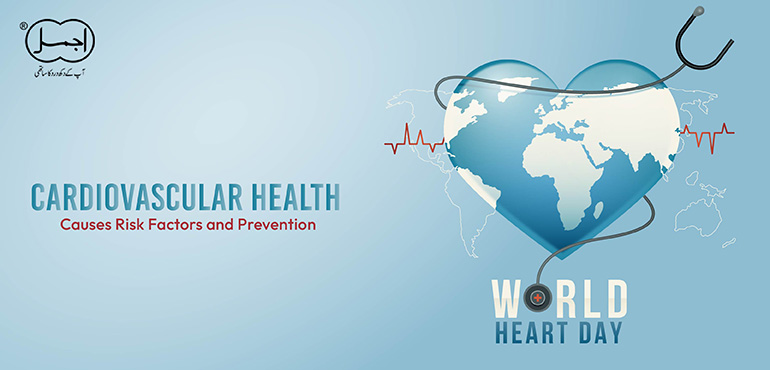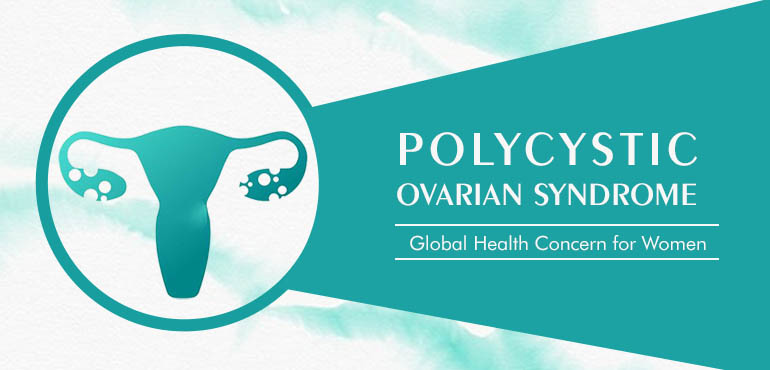Many natural remedies, herbal medicine and Unani medicine help us cure Various ailments, get us some comfort, and ease our pain. These health conditions include very basic ones like bloating, constipation and acidity and also include the most serious ones which involve a shift in the major parameters of the body like diabetes, hypertension, poly-cystic ovaries disease (pcod), polycystic ovaries syndrome (pcos), thyroid and so many others.
Global Use of Natural Remedies
For hundreds of years, people around the world relies on traditional natural remedies to meet their multiple health needs (Ekor, 2014). The global demand for natural remedies is increasing despite medical and technological advancements. In different national healthcare settings, many people now resort to these products for the treatment of various health challenges. (Geneva, 2004)
It is evaluated that up to four billion people (approximately 80% of the global population) living in developing countries are dependent on herbal medicinal products as a primary source of health care. Furthermore, a traditional medical practice that includes the use of herbs is seen as an important part of the culture in those communities (Bodeker and Ong, 2005, Mukherjee, 2002)
Natural Remedies have both advantages and disadvantages. One can get complete benefits from natural remedies by correctly using them. But, if these remedies are not used properly, they can have serious consequences and prove dangerous to health.
Benefits of Natural and Herbal Remedies
Natural and Herbal remedies have been used for a large number of years like traditional medicine. Herbal medicine is the establishment of present-day medicine. Moreover, these medicines also have very rare side effects. Following are some benefits of natural and herbal remedies:
Cheaper
Natural remedies are cheaper than conventional medicine. These remedies are used worldwide for ages because natural remedies are way more affordable and cost-effective than Natural Remedies.
Accessible
Natural remedies are easier to have than prescription medicine. There are so many remedies which are found in our kitchens. so, we don’t have to rush to pharmacies to get these medicine.
Natural
People are always attracted to nature and go for products which naturally stabilize hormones and metabolism. These natural remedies promote natural healing and provide strength to the immune system.
Side effects
It is believed that natural remedies are associated with a lesser number of side effects than prescription drugs.
(2nd International Conference on Herbal & Traditional Medicine June 20-21, 2019)
Disadvantages of Natural Remedies
Although therapies that involve these natural agents have shown promising results, due to poor regulation and monitoring these remedies can have the following disadvantages as well:
Poorly Monitored
The efficacy of a large number of herbal products has been established, but still many of them are untested. Either their use is poorly monitored or not even monitored at all.
Allergic Reactions and other side effects
Natural remedies can sometimes contain materials which can cause allergic reactions in various individuals. Furthermore, many of these remedies have side effects which take a long time to reveal themselves. Hence, herbal medicine can act as a poison if used incorrectly.
Safety
As a consequence of poor monitoring and inadequate knowledge of their mechanism of action, contraindications, side effects, potential adverse reactions, and interactions with existing functional foods and traditional pharmaceuticals and to promote safe and rational use of these agents. (Awodele et al., 2018)
The FDA and Herbal Supplements
The FDA counts natural supplements as foods but not drugs. So, natural products are not subject to identical testing, production, and labelling standards and regulations as they do drugs.
You can now observe labels that demonstrate how herbs can affect different actions in the body. However, herbal and natural supplement labels are unable to refer to the treatment of specific medical conditions. This is because these supplements are not subject to clinical trials or the same production standards as a prescription or traditional over-the-counter drugs.(FDA)
For instance, St. John’s wort is a famous herbal supplement that is thought to be very effective the for treatment of depression in some cases. A product label on St. John’s wort can say,natural remedies “alleviates mood” but it is unable to claim to treat a specific disease, such as depression.
Unlike medicines, herbal supplements are not needed to be standardized to make sure batch-to-batch consistency. Some manufacturers might use the word standardized on the label of supplements, but it does not mean the same thing from one manufacturer to the other.
Natural Remedies in Pakistan
Traditional and natural medicinal practices in Pakistan have a large history and are mainly based on the Unani Tibb which is the Greco-Arab system of medicine. The Unani system depends upon the concept of humour and its basic objective is to keep nature and mankind coexisting in equilibrium. It was later extended to the Arabs and was also adopted by both Europe and Asia. It was further enriched by natural remedies Chinese and Indian medicine. It was introduced in India by the Muslim rulers around 1350 AD. Unani Tibb is still dominant in Pakistan and used as a first-line treatment option, especially among tribal peoples.(Ahmad et al., 2021)
A lot of herbal remedies with great safety and efficacy are used by both humans and animals, sourced by the herbalist (Hakeem) or known by older people. Traditional medicines are used by people with low income because they are highly affordable and cheaper. These remedies are used by both rural and urban people because of their rich history. Some institutions have done scientific research and hence marketing quality controlled traditional herbal remedies. (Awais, 2009)
5 -Scientifically Proven Natural Remedies
Honey
Honey is a natural sweetener that might work for a cough just as well for a cough as over-the-counter medicines. Which can especially be helpful for children who aren’t old enough to take OTC. But it should not be used in the case of infants or toddlers less than one year of age. a small risk of a rare but serious food poisoning is present that can prove fatal for them.(Khatri, 2021)
Honey is famous for a number of health benefits. For example anti-inflammation, antibacterial, antioxidant, and potentially anti-mutagenic. The anti-nociceptive effect of honey is under investigation. natural remediesThe clinical use of analgesic drugs is followed by multiple adverse reactions and complications. On the other hand, Honey proves to be a viable option as a combination pain therapy.
Protein, flavonoids, phenolics, amino acids, organic acid, pigment, water, and high sugar content in honey have their own characteristic therapeutic values and there is a complex interaction between these constituents that are responsible for its properties like antibacterial, antiinflammation, and immunomodulation. Honey may change the mediators of antiinflammatory and immunostimulatory. So, directly or indirectly results in inhibition of pain. These can be done in the central and peripheral nervous systems or at the autonomic receptor sites. There can also be the involvement of the cyclo-oxygenase pathway. (Lazim and Baharudin, 2017)
Turmeric
Turmeric is a plant which has a very long history of therapeutic and medicinal use, which is almost 4000 years. In many parts of Asia, turmeric has been used not only as a basic spice but also as an element in religious rituals and festivals.
Unani practitioners also use haldi to eradicate phlegm or kapha, and also to open blood vessels to regulate blood circulation. It can be added to foods, including rice and bean dishes, to aid digestion and reduce gas and bloating. (Prasad and Aggarwal, 2011)
This spice is very famous because it can help cure multiple conditions of arthritis (wajah-ul-mafasil) to fatty liver. Other claims, like treating ulcers and skin rashes after radiation needs further research. High doses of turmeric can cause digestive problems. (Khatri, 2021)
Ginger
In Asian medicine, ginger is being used for thousands of years for the treatment of stomach pain, diarrhoea, and nausea, and studies prove that it helps with nausea and vomiting. Studies also show that it might also work for menstrual cramps. It can cause stomachache, heartburn, diarrhoea, and gas in some people. It can also interact with some medications as well. (Khatri, 2021)
Multiple Unani formulations which contain dry ginger are used in diseases of liver, kidney, stomach, joint and as an aphrodisiac etc. In Unani Medicine, advanced researches also prove the use of Zingiber officinale rhizomes such as in liver impairment, rheumatism, sciatica, and arthritis. In Unani medicine besides traditional medicinal uses new indications of ginger make it more important like anti-emetic, antiplatelet, antioxidant, antimicrobial activity and hypercholesterolaemic etc.
The most common uses of Zingiber are in Seriyamai (indigestion), Irumal (cough), Azhal noi (pitha diseases), and Mukkatra noi (mukkatra diseases) (Abdullah Tauheed et al.)
This spice is very famous because it can help cure multiple conditions from arthritis to fatty liver. Other claims, like treating ulcers and skin rashes after radiation needs further research. High doses of turmeric can cause digestive problems. (Khatri, 2021)
Garlic
Garlic, (Allium sativum) Linn. is a member of the Liliaceae family. It is referred to as Seer in the Persian language and Saum in Arabic and Unani medicine, similarly in Sanskrit, garlic is often named lahsuna or rasona. Some studies reveal that people who consume extra garlic are less likely to acquire certain types of cancer (garlic supplements do not show the same result). It also can decrease blood cholesterol and blood pressure levels, but it doesn’t appear to help a lot.(Khatri, 2021)
Garlic plays a major role in the daily diet and maintaining good health. The effects of garlic/seer have been largely ascribed as Muhallil, Mulattif, Jali Musakhkhin, Muraqqiqe dam, Mudirr-e-Baul/Diuretic, Mufatteh urooq, Muqatte-Akhlate ghaleeza, antihyperlipidemic, hepatoprotective actions.(Nasir et al., 2020)
The scientific studies also show the major effects in Hummiyat kuhna (Intermittent fevers), Sara’a (epilepsy), Dama (asthma), Irqunnisa (sciatica), Jarab (scabies), Bars (Leucoderma), Zaheer (amoebic dysentery), Haiza (cholera), Warme Meda (gastritis), Nazla muzmin (chronic catarrhs), Shaheeqa (whooping coughs), Dafa-e-Ta’affun (anti-infective), Zaghtuddam Qawi (hypertension), Ziyabetus (diabetes), Falij (paralysis), Niqras (gout), and other numerous conditions.
Peppermint
Peppermint (Mentha piperita Linn.) has been used for centuries as a natural health remedy. Peppermint oil is a traditional remedy and can be found in everyone’s kitchen easily. People have been using it to resolve several health issues and it works for many diseases related to mental health, digestive system and even in issues of reproductive issues as well. (Khatri, 2021)
Peppermint has a number of dietary uses and health benefits. Leaf of the herb is antispasmodic, digestive, mustahi (appetizer), Mukhaddir (anaesthetic), Dafa-e-Deedane Ama’a (anthelmintic), anti-emetic, Mukhrij-e-Balgham (expectorant), insect-repellent, Mukhaddir avaa (local anaesthetic), Jazib Advia (absorbent), Dāfi‘-i Ḥikka (anti-pruritic), Muhammir Advia (rubefacient), khushboodar (aromatic), Kasir Riyah (carminative), Dafe Taffun (anti-septic), Moarriq (diaphoretic), Musakkin (sedative) and a great Muqavvi Rehem (uterine tonic). (NPH)
2ND INTERNATIONAL CONFERENCE ON HERBAL & TRADITIONAL MEDICINE JUNE natural remedies 20-21, M. P. H. A. D., UAE | 2019. Benefits of Herbal Medicine.
ABDULLAH TAUHEED, H., ALI, A. & ZAIGHAM, M. ZANJABEEL (ZINGIBER OFFICINALE ROSC.): A HOSEHOLD RHIZOME WITH IMMENCE THERAPEUTIC POTENTIAL AND ITS UTILIZATION IN UNANI MEDICINE.
AHMAD, K., AHMAD, M., HUBER, F. K. & WECKERLE, C. S. 2021. Traditional medicinal knowledge and practices among the tribal communities of Thakht-e-Sulaiman Hills, Pakistan. BMC Complementary Medicine and Therapies, 21, 1-21.
AWAIS, M. 2009. 10 Medicinal plants of Pakistan: A literature study.
AWODELE, O., FAJEMIROKUN, O. & OREAGBA, I. 2018. Herbal medicines use: remedies or risks. West Afr J Pharm, 29, 1-18.
BODEKER, G. & ONG, C.-K. 2005. WHO global atlas of traditional, complementary and alternative medicine, World Health Organization.
EKOR, M. 2014. The growing use of herbal medicines: issues relating to adverse reactions and challenges in monitoring safety. Frontiers in pharmacology, 4, 177.
FDA Dietary Supplements.
GENEVA, S. 2004. WHO Guide lines on Safety Monitoring of Herbal Medicines in Pharmacovigilance Systems.[Google Scholar].
KHATRI, M. 2021. Home Remedies: What Works?
LAZIM, N. & BAHARUDIN, A. 2017. Honey—a natural remedy for pain relief. Nutritional Modulators of Pain in the Aging Population. Elsevier.
MUKHERJEE, P. K. 2002. Quality control of herbal drugs: an approach to evaluation of botanicals, Business horizons.
NASIR, A., FATMA, G., NESHAT, N. & AHMAD, M. A. 2020. Pharmacological and therapeutic attributes of garlic (Allium sativum Linn.) with special reference to Unani medicine—A review. J. Med. Plants Stud, 8, 6-9.



